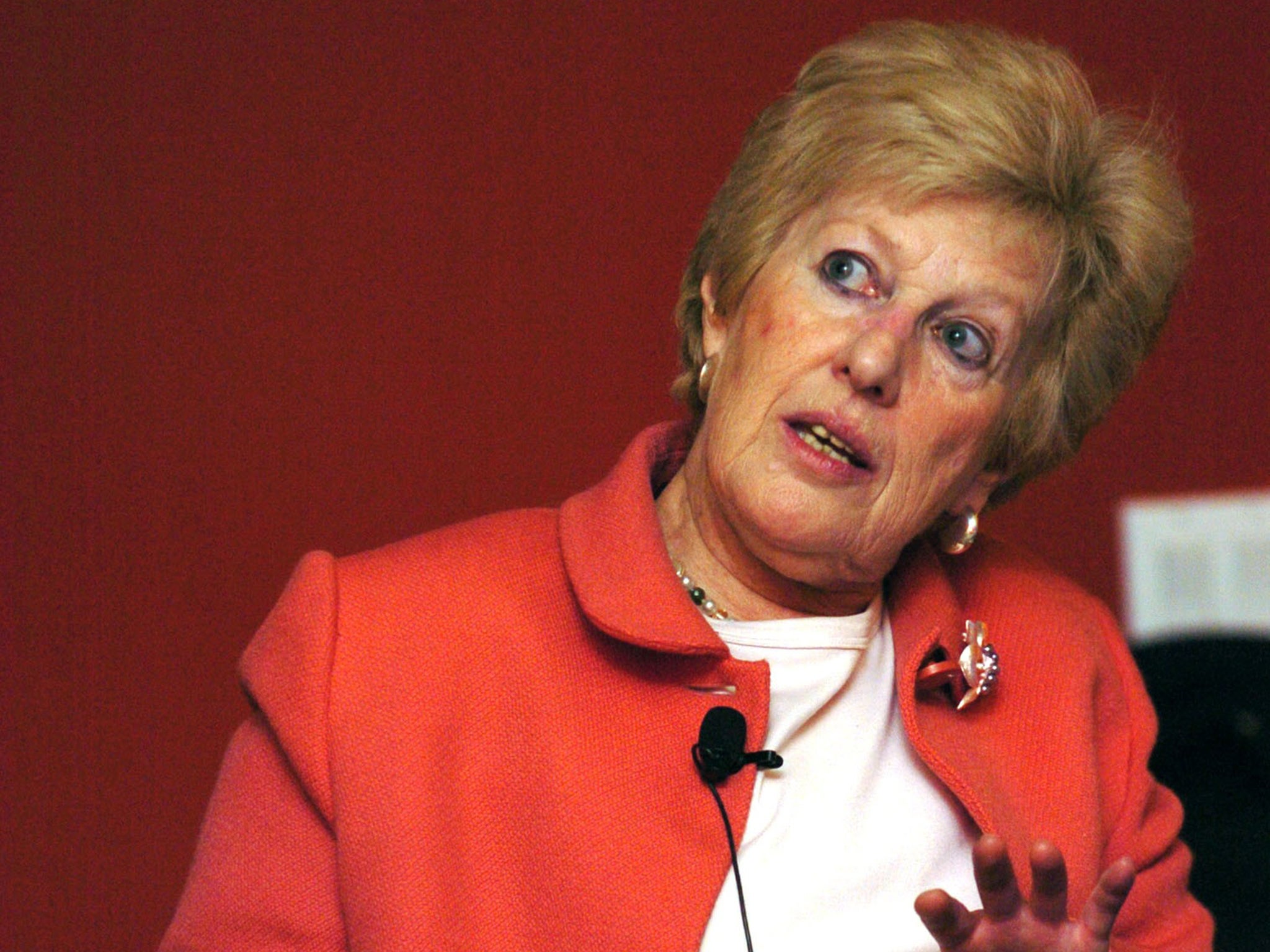Julia Margaret Polak: Scientist whose own heart-lung transplant inspired her to make breakthroughs in growing organs in the laboratory
Polak’s story inspired a novel, Intensive Care (2001), and a play, Change of Heart, by Rosemary Friedman, to raise funds

Julia Polak was a pioneer in the field of histochemistry – and an inspiration to all around for her determination and perseverance and her ground-breaking research into developing organs in the laboratory for transplantation, following her own life-saving heart and lung transplant.
At the age of 55 Polak was professor of endocrine pathology at the Royal Postgraduate Medical School at Hammersmith Hospital, and was working alongside the renowned cardiothoracic surgeon Sir Magdi Yacoub at Harefield Hospital on the reasons for rejection in transplant surgery. Then the respiratory problems she had been afflicted with since childhood worsened. Her condition, which she believed was asthmatic, left her breathless, unable to sleep and on occasion unable to move.
After much persuasion from Yacoub, Polak agreed to an examination which revealed her severe pulmonary hypertension – high blood pressure in the lungs – the disease she had been studying in Yacoub’s patients. He insisted that she needed a heart and lung transplant, a dangerous procedure at the time. Polak and her husband, an eminent haematologist, were aware of the difficulties of finding a suitable donor and the risk of her body rejecting the new organs, but she was dying. Yacoub performed a so-called “domino transplant”, replacing her heart and lungs with those of a donor and transplanting her heart to a second recipient.
After some worrying months, Polak’s fragile immune system began to stabilise and she made good progress, taking copious quantities of pills and having daily gym work-outs. During her recuperation she turned her mind to finding a more reliable solution for people with incurable lung disease, and she embarked on research into “tissue engineering”, the concept of growing new organs and tissues in a laboratory; her quest was to create artificial lungs.
Realising that such a challenge couldn’t be met by any one scientist or discipline, she established the Julia Polak Research Trust and in 1997 became Director of the Imperial College Tissue Engineering and Regenerative Medicine Centre, which she co-founded with Professor Larry Hench. Her innovative vision was to encourage a multidisciplinary approach, in which cell biologists would collaborate with engineers and clinicians. Soon the team had over 60 researchers.
In 2004 she announced that they had succeeded in growing brain and lung tissue by manipulating embryonic stem cells, using a process that converts the cells into mature small-airway epithelial cells, which line the part of the lung where oxygen is absorbed and carbon dioxide is excreted. Their ground-breaking work included some of the first “gene arrays”, artificial scaffolds upon which cells can be grown and analysed, sparking the hope that one day a functioning lung might be created.
Polak’s story inspired a novel, Intensive Care (2001), and a play, Change of Heart, by Rosemary Friedman, to raise funds. She was never embarrassed to share her story in order to increase public awareness, and she was known for her liveliness and sense of fun. She gave a presentation on her own lungs to a packed auditorium at Hammersmith Hospital, describing them as “of no use to me, so I studied them.”
Born in Buenos Aires in 1939, Julia Margaret Polak was the daughter of Carlos, a lawyer, and Rebecca, an author, both of Eastern European Jewish origin. Inspired by her uncle, Moises Polak, an eminent pathologist, she graduated in medicine from Buenos Aires University in 1961, before specialising in pathology.
While studying she met her husband-to-be, Daniel Catovsky, who proposed one evening during a tango. Seven years later they moved with their daughter to London, where Polak pursued graduate studies at the Medical School at Hammersmith Hospital under Everton Pearse. They never went home, in part due to the political situation in Argentina.
As a histochemist Polak pioneered the use of immunohistochemistry to make peptides, amino acid compounds, visible under a microscope – a technique now used in labs worldwide. She discovered that the control of the nervous system is regulated by peptides, tiny proteins which convey hormonal messages to the body’s major organs.
She demonstrated that when peptides were added to the heart, it changed the way it functioned; this was how the cardiac nerves controlled it. This meant that nerves talk to each other by means of peptides; while she first found this in the gut, bladder, lung and heart, she later showed it was also true of the brain itself.
Polak wrote nearly 1,000 original papers as well as 117 review articles and was the editor and/or author of 25 books. She received many honours and prizes, serving on several national and international tissue engineering and stem cell advisory panels, while also editing the journal Tissue Engineering. In 2003 she was appointed DBE. At the time of her death she was one of the world’s longest-surviving lung transplant patients, and is survived by her husband and their two sons. In 2011 her daughter Marina was killed in an accident while crossing London Bridge. Polak took some comfort that her organs went to six other people, including a baby.
Julia Margaret Polak, scientist: born Buenos Aires 26 June 1939; DBE 2003; married 1961 Daniel Catovsky (two sons, and one daughter deceased); died London 11 August 2014.
Join our commenting forum
Join thought-provoking conversations, follow other Independent readers and see their replies
Comments